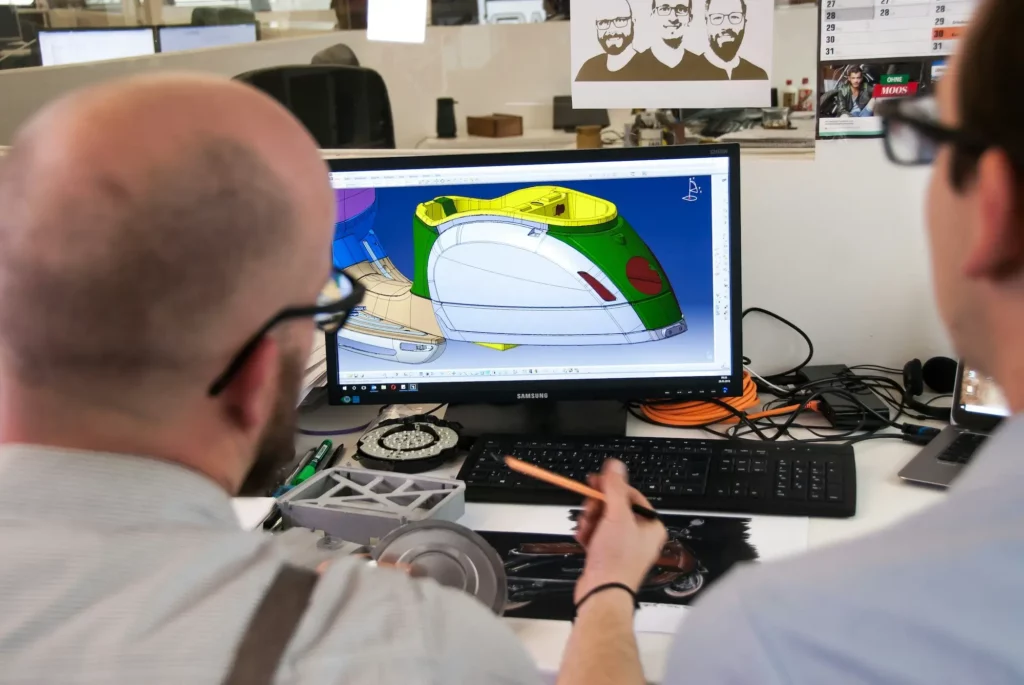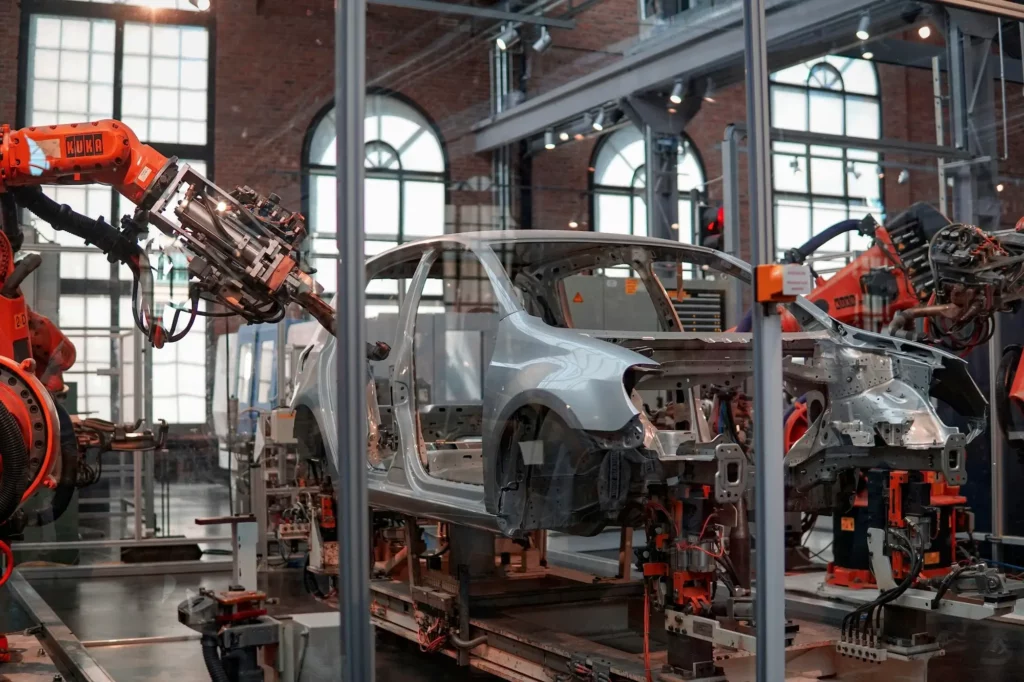Computer-aided design, or CAD, is a big part of the product design world. It helps engineers, designers, and product teams bring ideas to life.
But working with CAD tools isn’t always smooth. If you’ve worked in the industry, you’ve likely faced a few headaches, from file issues to feedback gaps.
In this article, we’ll discuss six of the most common problems people face when using different CAD tools and share some solutions you can try out to address them.
6 Common CAD Problems and How to Fix Them
Let’s look at some common problems that show up when working with CAD projects. We’ll also talk about what causes them and suggest simple ways to fix or improve the situation.
1. File Incompatibility Between CAD Software
CAD tools often save files in their own format. For example, AutoCAD uses DWG, while SolidWorks might use STEP or SLDPRT.
This becomes a problem when teams need to share drafts or test ideas together but can’t open each other’s files. It slows down progress, breaks workflows, and can even lead to lost data.
To avoid this, teams can use neutral file formats like STEP or IGES, which most systems support. Some cloud platforms also offer easy file viewing without needing the full program.
2. Higher Costs From Multiple CAD Platforms
Running several CAD systems can get expensive. You pay for more software licenses, more training, and more support.
Your IT team also spends extra time fixing bugs, updating programs, and setting up hardware, usually on Windows machines. These costs add up fast and can slow down the ability to invest in other tools or testing.
To save money, companies can cut back to fewer systems that handle many tasks like drafting, modeling, and simulation.
Cloud-based CAD tools often offer simpler pricing, automatic updates, and built-in support. This helps reduce long-term costs and gives your team more time to focus on real work.
3. Messy File and Data Management
Managing CAD files across different tools is hard. Files get lost in inboxes or buried in folders. You end up with five versions of the same thing, and no one knows which is the right one. This hurts the team’s ability to test ideas or track project life stages.
To fix this, store all your CAD files in one shared location. This could be a cloud folder, project space, or data management system.
Use simple naming rules so it’s easy to find the latest version. Giving everyone access helps avoid confusion and keeps all the important stuff in one place.
4. Too Many Design Changes
Designs change often, especially during early testing or when ideas are still forming. But if everyone edits files freely without a clear system, things break.
People might work on an old version or make changes that remove key features. You lose control over the final result, and important elements might disappear.
One way to fix this is by using a version control system or naming files by version. Even a simple change log in a shared doc can help.
Assign someone to approve changes before they go live. That way, every edit gets reviewed, and the team avoids confusion. It also gives you the ability to easily go back if something doesn’t work.
5. Broken Assemblies and Missing References
Ever open a CAD assembly and see parts missing? That usually means files were moved or renamed. CAD software relies on links between files.
If those links break, it can’t load the pieces, so it just stops or shows errors. This gets in the way of testing, measuring, and presenting your design.
To fix this, keep all related files in one folder and avoid renaming them after linking. Many CAD tools offer a “Pack and Go” feature that gathers everything into one folder for easy sharing.
Using this helps protect your work and keeps your design complete, no matter where you open it.
6. Broken Communication During Collaboration
When teams work in different CAD systems, feedback becomes slow and scattered. One team might make a change that others don’t notice.
Feedback comes in late or doesn’t match the current design. The lack of proper CAD collaboration can lead to confusion, mistakes, and wasted effort.
The best way to fix this is to use tools that allow live feedback right inside the CAD file. Some design review platforms offer comment features or markup tools that help teams talk clearly while they draft and present ideas.
If that’s not available, setting clear rules for sharing changes and suggestions can help teams stay on the same page.
How CADchat Improves Collaboration Within Your Team
CADchat uses simple technology to bring your team closer together during the design process. Whether you’re an engineer, product designer, or part of a cross-functional team, CADchat helps everyone work together better, faster, and with fewer mistakes. Here’s how:
Meet Inside the CAD File
Instead of sending emails or sharing screens, your team can talk directly inside the 3D model. CADchat lets you meet live in the actual file.
This makes it easy to identify problems, talk through changes, and make quick decisions without delay. Everyone sees the same thing and stays on the same page.
Add Comments Right Where They Matter
You can leave notes on any part of the design. Just click the area, type your thoughts, and move on. This keeps all feedback in context.
You don’t need to chase emails or try to remember past messages. It’s simple to track what was said, who said it, and what changed after.
Use the Whiteboard to Share Ideas
Sometimes you need to sketch out a thought or explain a quick fix. CADchat’s whiteboard helps with that.
You can draw, write, and share rough ideas with your team while everyone looks at the model. This helps people understand each other faster and makes it easier to evaluate design options.
Bring In Non-Technical People
CADchat makes it easy for people outside the design team to join in. Executives, marketers, and even supply chain teams can view the model and give input.
They don’t need to install any software or know how to use CAD. This builds a stronger team and helps everyone feel like part of the community.
Keep Everything in One Place
All comments, models, and meetings stay in the same workspace. You don’t have to dig through old emails or worry about using the wrong file. CADchat keeps your work organized and up to date, so your team always knows what to expect.
Track Every Change
Every edit, comment, or decision is saved. If something goes wrong or needs to be reviewed, you can always go back and see what happened. This helps you determine the reason for changes and avoid repeating mistakes from the past.
Work Together, Even If You’re Not Online at the Same Time
Teams in different time zones can still work well together. Anyone can leave feedback or mark up a file when it suits them.
The next person can jump in later and pick up right where things left off. This keeps the project moving without slowing anyone down.
Use CADchat to leave comments, track changes, and make decisions without delays. Try it out today!
Stay Aligned. Work Faster. Skip the Confusion with CADchat
Tired of long email threads, mixed-up files, and feedback that never gets to the point? CADchat is a CAD collaboration software that helps your team talk clearly and make faster decisions.
You can meet live or leave notes anytime. Everyone sees the same CAD model. No screen shares. No back-and-forth file uploads.
Designers, engineers, manufacturers, and even non-technical team members can all work together in one space.
It’s easy to check changes, leave feedback, and keep track of every version. No one gets left out. No important change gets lost.
With CADchat, you don’t waste time chasing updates or fixing mistakes from bad communication. You just get stuff done.
Try CADchat today and give your team the space to build better, together.
FAQs About CAD Problems
What are the problems with CAD?
CAD problems often show up when files don’t work smoothly with other software. If the CAD software version is different, users might not be able to open or edit a drawing file.
Small changes, like how to select objects or layout options, can also confuse designers. Sometimes, updates bring new features but break old workflows.
What problems can CAD cause?
One common issue is dealing with multiple versions of CAD software, which makes sharing files harder between teams.
There’s also the risk of data loss if a file crashes or autosave isn’t on. CAD can slow productivity if users don’t understand the program well or don’t have access to the right tools.
What are the 5 disadvantages of CAD?
CAD software can be hard to learn without the right knowledge. Files may not open correctly across platforms, especially if other professionals use different programs. Drawing details can get lost when converting to other formats.
Users may struggle with screen clutter, slow computers, or missing default settings. New versions often bring updates that don’t match older project preferences.
What are the complications of CAD?
CAD can complicate work when teams use different versions or programs, which leads to common issues like layout problems or file errors.
In manufacturing or engineering, even a small mistake in a drawing can mess up the whole workflow. Sharing files with others who use different tools also creates delays and confusion.


